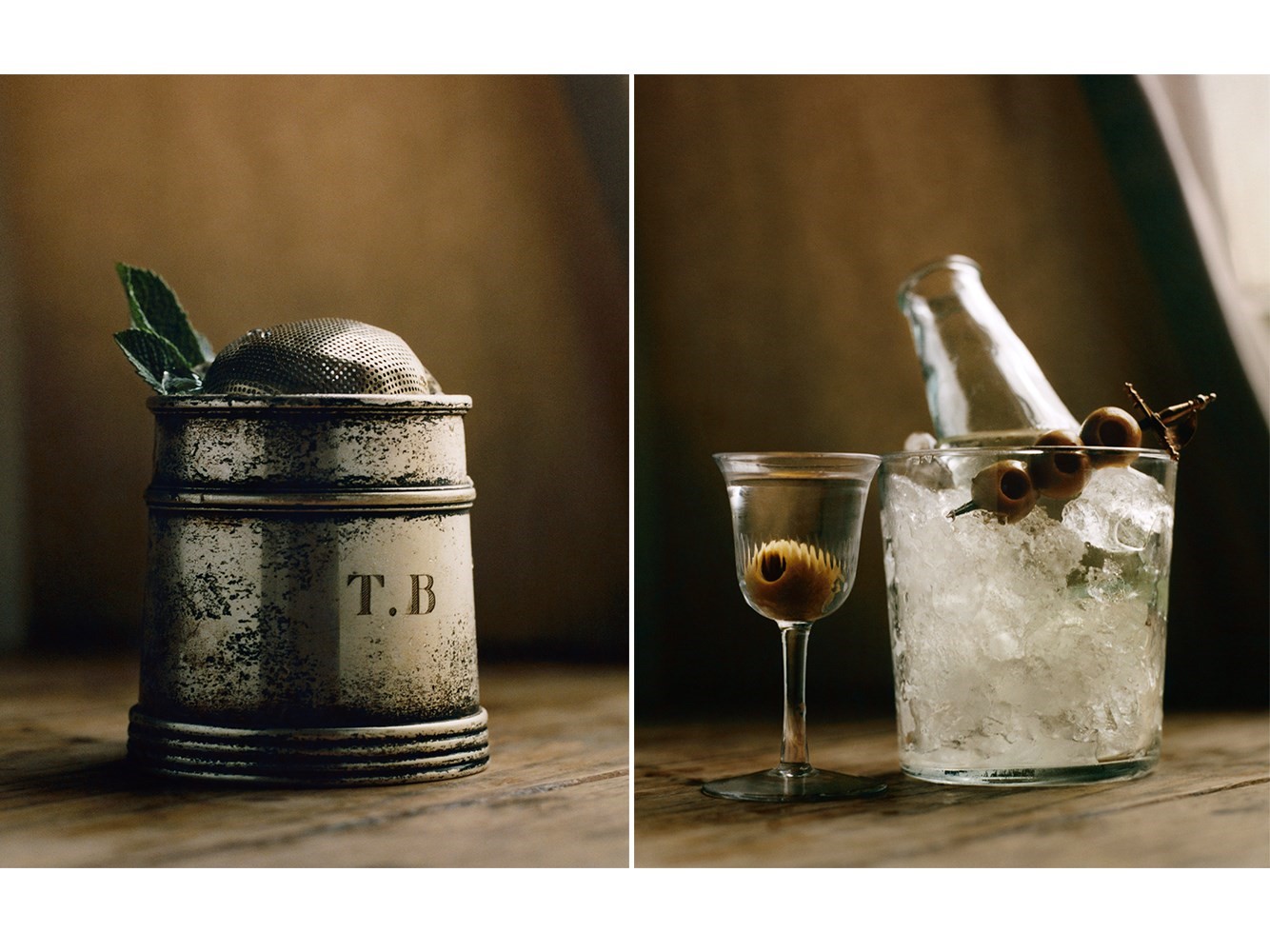“Being in the particular the elucidation of the Manners and Customs of people of quality in a period of some equality” – Harry Craddock, The Savoy Cocktail Book, 1930
A cocktail is the crystallisation of a historical moment. F. Scott Fitzgerald placed the Gin Rickey (half a lime, dry gin, soda, served long) at the centre of an unravelling adultery played out in searing heat of Long Island in The Great Gatsby. It was first made with bourbon but gin was easier to counterfeit during Prohibition (1920-1933), an era ironically defined by its drinks: the Corpse Reviver, the Mary Pickford, the Whisky Sour, the Sidecar, among others. The Martini glass bears the bold modernist lines of skyscrapers built during its heyday, when legendary barman Harry Craddock recorded it in The Savoy Cocktail Book (still considered a bible).
The ‘serve’ of classic cocktails defines them as much as the liquid mixture. Rising cocktail star Sean Blake, who first mixed drinks under the watch of Dick Bradsell, inventor of the espresso martini, before running the bar at Spuntino and then setting out on his own as a consultant, thinks a lot about the perfect serve. Blake doesn’t look to other bartenders for inspiration though. “I’ve never been part of the bartender scene in London, it’s always been about me being a creative rather than me trying to become someone else, breaking the rules in my own way.” He prefers to work with talented chefs rather than bartenders, and collaborative projects with trailblazers like John Chantarasak of Som Saa and Nicholas Balfe of Salon have inspired him the most.
Blake obsesses over barware and scours online auctions and antique shops for additions to his vast collection that can make his ‘serve’ just so. He had a recent windfall when clearing out a family home, where he found dozens of antique glasses wrapped in newspaper from his great grandmother’s collection. Blake “backwards engineers” his drinks. “I like to make the ingredients myself, if I was doing a Cosmopolitan I would juice some cranberries and make an orange liqueur, anything that I could do within the boundaries of the law. I do a lot of infusion-based stuff, taking classic recipes and doing as much as I could to make it my own. I wouldn’t change the recipe, but something would change in the drink.”
We asked Blake to make four drinks with a harmony between the drink, the glass and the serve, and this is what he came up with.
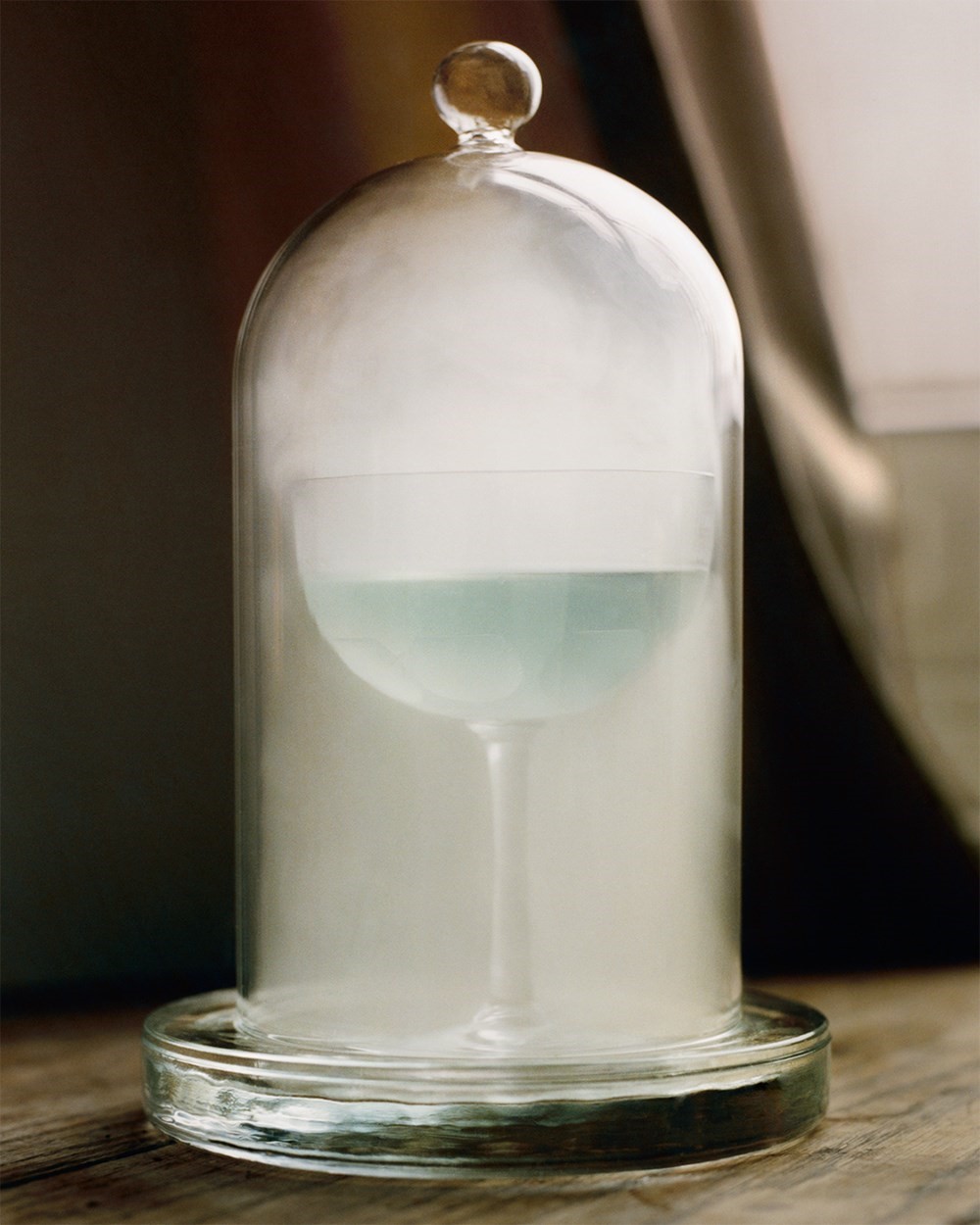
The Aviation
To a cocktail shaker full of ice add 40ml gin, 15ml lemon, 15ml Maraschino, shake well, double strain into a cocktail glass. Fill cloche with Violet Vapour, rest for 2 minutes.
“The Aviation is considered one of the classic cocktails. The original recipe was with violet liqueur, maraschino, gin and lemon and garnished with a little cherry in a coupe glass. The violet gives it that sky blue colour, because it was developed around the turn of the century when there was first flying in planes, so it was a real point of interest. I believe it was made in the states, and then when the Savoy did their cocktail book, which is kind of like a bible to a lot of modern bartenders, Harry Craddock took the violet out of the recipe because it wasn’t freely available at the time. There are now two schools of thought in bartending – some people put it in, some people never put it in. I don’t think you can take something out of a drink because it’s not freely available. My thinking was, if it’s named after the sky, how could you get the violet in it without changing the Savoy liquid recipe? Smoking is an interesting way of getting new flavours into drinks in a way that doesn’t damage the drink itself. For the aviation, thought of clouds being made of water vapour, so I asked a vape maker to make me a violet-scented cloud for me, obviously without any nicotine in.
“I wanted that coupe shape, but not the Speakeasy coupe. I wanted the drinks to have a jewel-like quality and the etching in the bottom seemed to give it that. Because the glass is quite a large coupe it allowed that space to get the head on the vapour. The Aviation is really trendy drink at the moment and smoking drinks is trendy too I thought mixing the two would be a nice almost tongue-in-cheek thing, half a piss-take. I don’t think you can vape a drink with a straight face.”
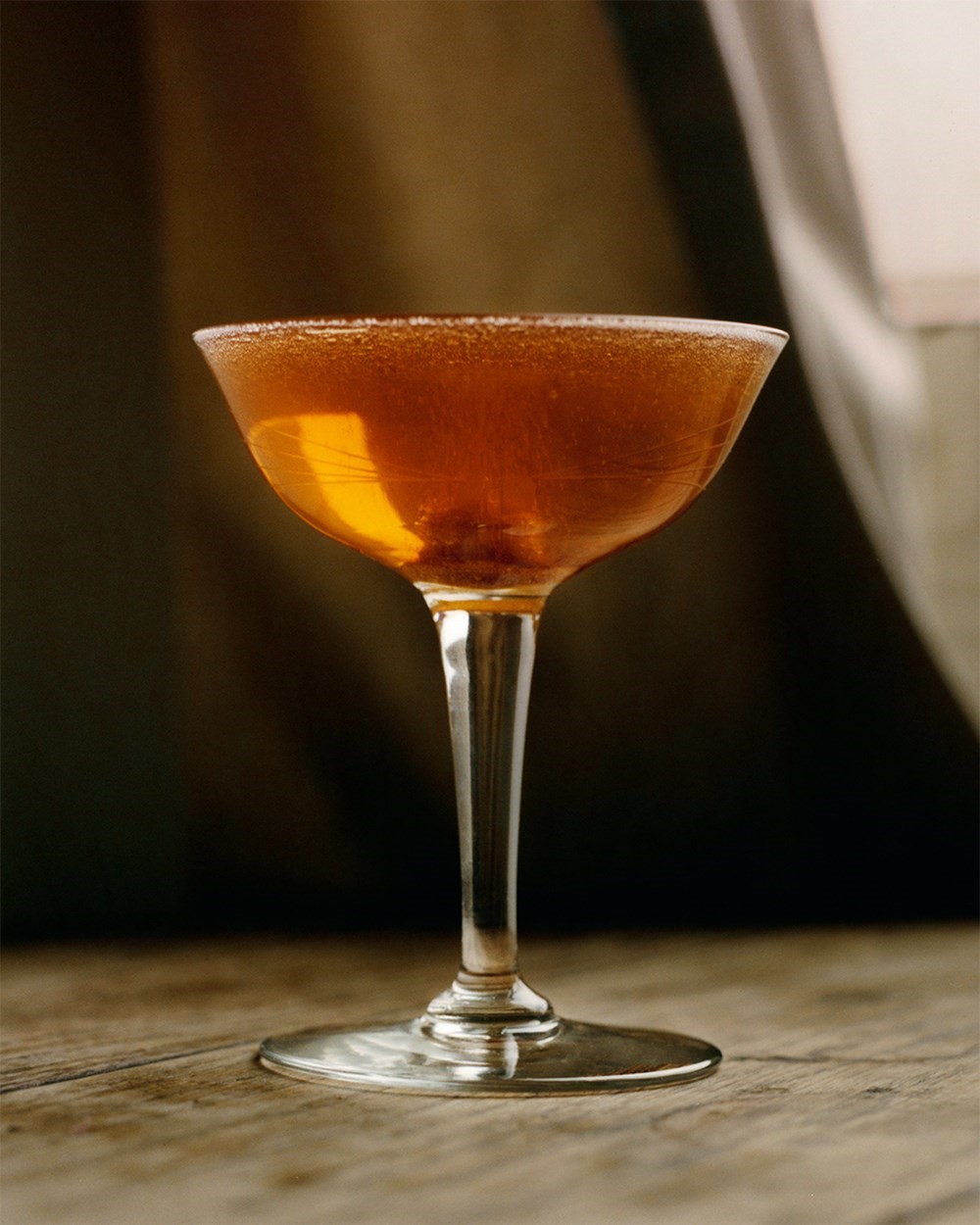
The Champagne Cocktail
Built in the glass. Angostura-soaked sugar cube, 25ml Cognac, top up with Champagne, lemon twist, taken out (not in the drink as garnish, just the oils sprayed on the top). A chilled coupe glass.
"I was looking at drinks that rely heavily on their glassware. Nowadays, everyone in the world would serve the champagne cocktail in a flute, but that doesn’t compute because it was invented pre-flute in the late 19th century. It’s a beautiful perfect coming together of ingredients, it takes no skill to make and it is the most elegant thing on the planet. Back in the day, champagne wouldn’t have been as fizzy, it would have been more of a frizzante and they didn’t like the champagne to be too cold, so they would hold the coupe to warm it up.
I’ve served it how I feel it’s more relevant based on its moment of creation, how it should be drunk and who should be drinking it. You can’t imagine people drinking from a champagne flute in the 1920s, unless it’s a massive art deco one."
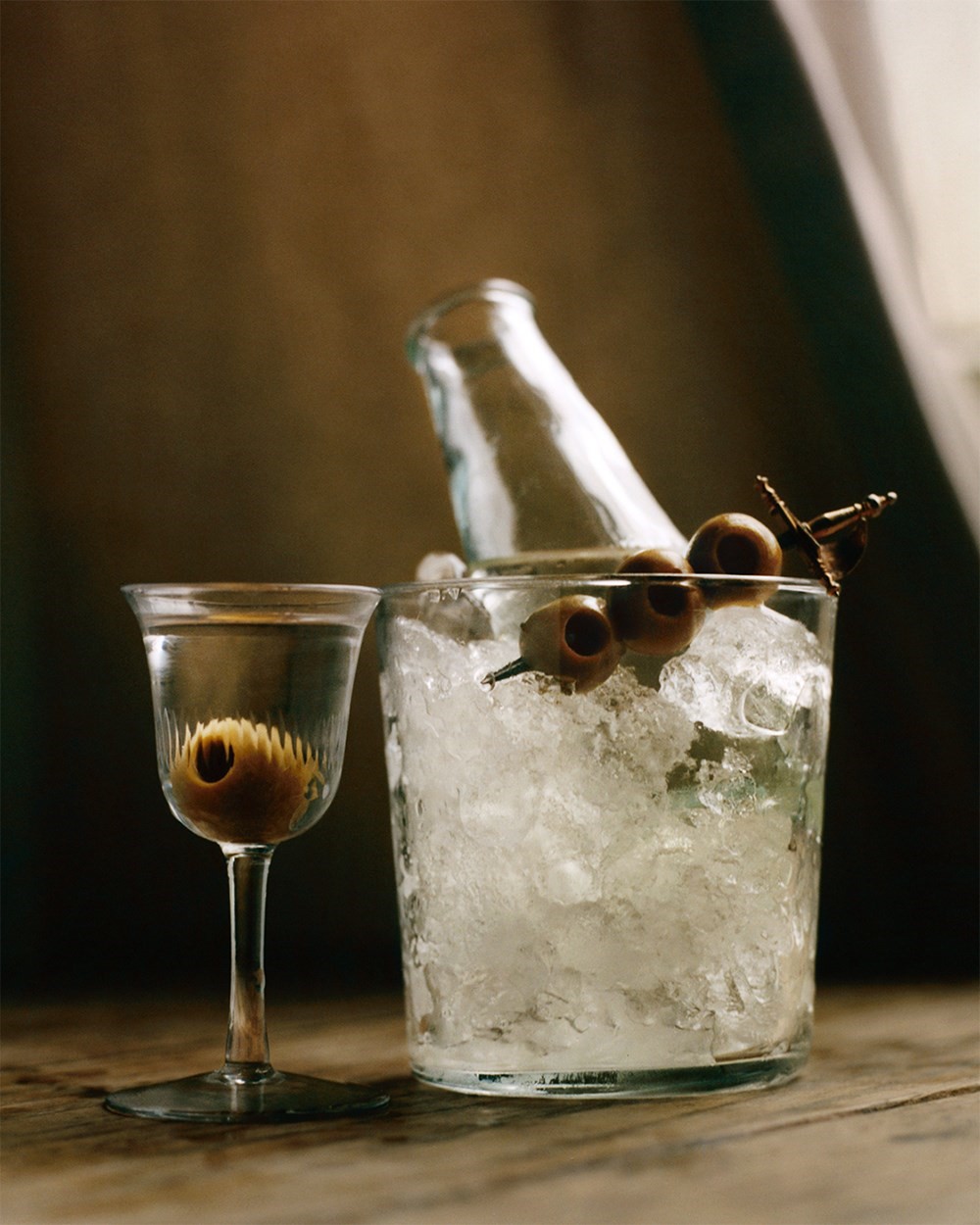
The Modern Martini
In a mixing glass, wash the ice with dry Vermouth and discard liquid. Add 70ml gin or vodka and stir clockwise 25 times and anti-clockwise 25 times, and strain into the serving bottle and set on ice. Garnish with a lemon twist or olives and a chilled glass to serve.
"I first got served a Martini on ice with a separate glass at Mark’s Bar in Soho. If not served on ice, people say a Martini lasts 7 minutes before it warms up too much and the oils split in the drink. For me a Martini is a drink that is made for the customer – dirty, gin with a twist, dry, straight up, on the rocks. I normally order it filthy dirty, with 5 spoons of olive brine replacing the vermouth and extra olives. Traditionally you’d have gin.
Martinis started life as a 2:1 ratio with the vodka and the vermouth but nowadays most bartenders just wash the ice with the vermouth, tip it out and add the vodka or gin. Ordering a Martini is basically a polite way of asking for a double shot of gin or vodka. Serving it like I have here stops it from getting warm, and keeps it ice, ice cold. Vermouth should always be kept refrigerated too – the temperature is key to the drink. In the Savoy book it says that all Martinis should be shaken, which really shocked me. Generally you shake things with juice in because it brings them to life, especially citrus, and you stir straight spirit drinks because you don’t need to bring anything together, you are just trying to chill and perfume the spirit.
You eat it with your eyes too, I love the little bottle and glass – it’s so pleasurable, but it’s not just done for the visual, it has a reason and that’s how I have always served Martinis, ever since. The Martini glass is from my great grandma. It’s so small it must have been a sherry glass, or for dessert wine, and you know it’s old because it’s not an acid etching. It's from a very similar time to when the Martini was invented. I picked it for size, the idea being that if your drink’s there on ice each mouthful is like the first sip of a Martini. I love the way that the olive looked like a glitch too when seen through the glass. I found the sword in a charity shop for 50p for my girlfriend a few years ago and I dug it out. It was just the perfect thing, I think it’s collectable. With that drink having everything so considered, using a wooden cocktail stick would have been awful."
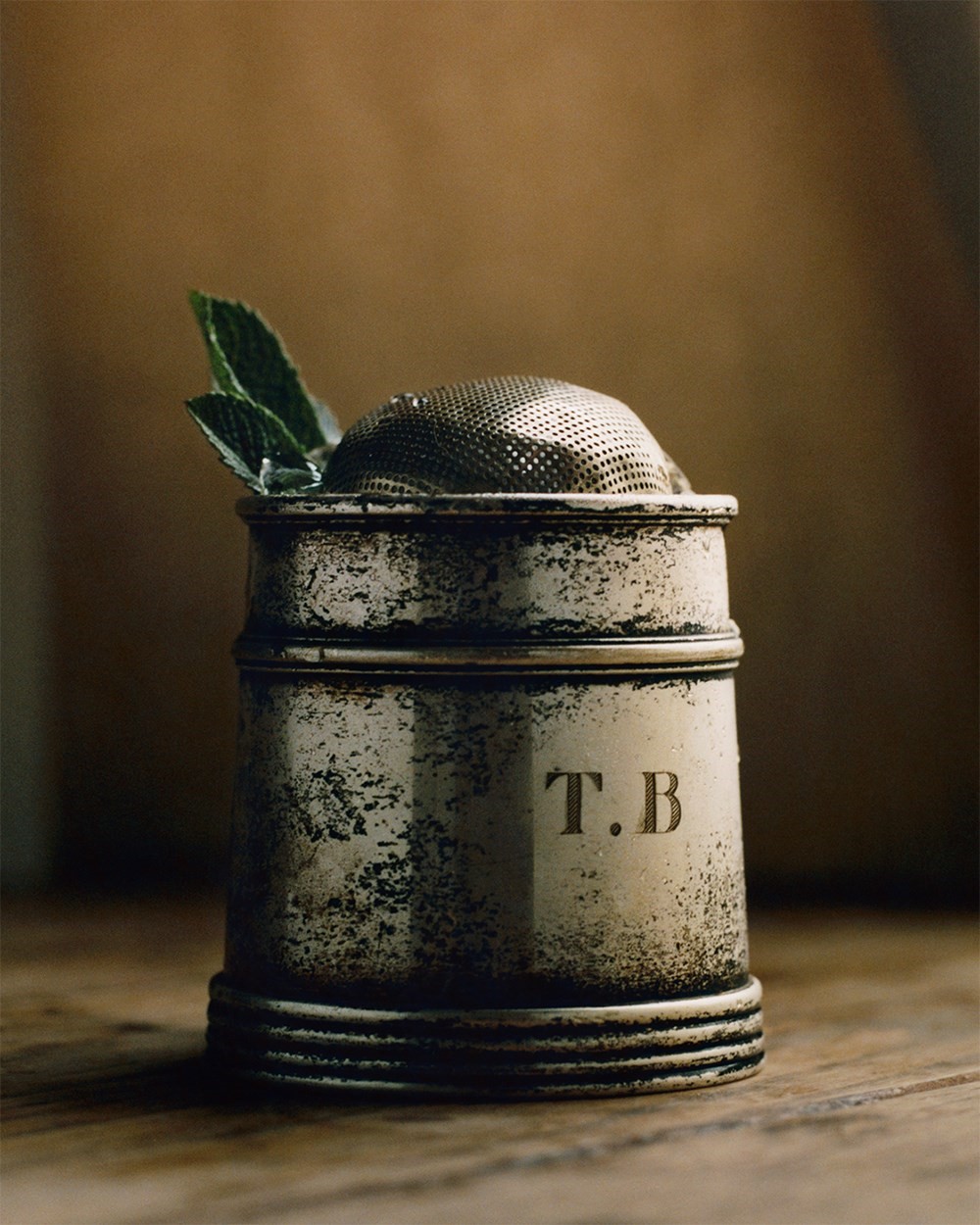
The Mint Julep
Built in a Julep Tin. Add 6 mint leaves, 1 bar-spoon brown sugar, 50ml Bourbon. Muddle but don’t bruise the leaves too much, keep adding ice and muddling until tin is full and sugar has dissolved, garnish with more mint leaves and strainer.
"The Mint Julep is an old American drink known for the drink of the Kentucky Derby. It’s crushed ice, mint, sugar and bourbon and the drink changes as the ice melts: after it’s had a bit of dilution, the sugars have dissolved and the mint infuses it and gets a real depth of flavour. They are traditionally served in Julep tins that are like a tankard with no handle. I used my father’s christening cup, I love that it is nicely small compared to a lot of Julep tins, especially as I like my drinks to be strong. The strainer on top is an old silver tea strainer that I rescued from my grandfather’s house. Traditionally it would be a cocktail strainer, because they didn’t have straws back then so it would stop the crushed ice from going over your face."
